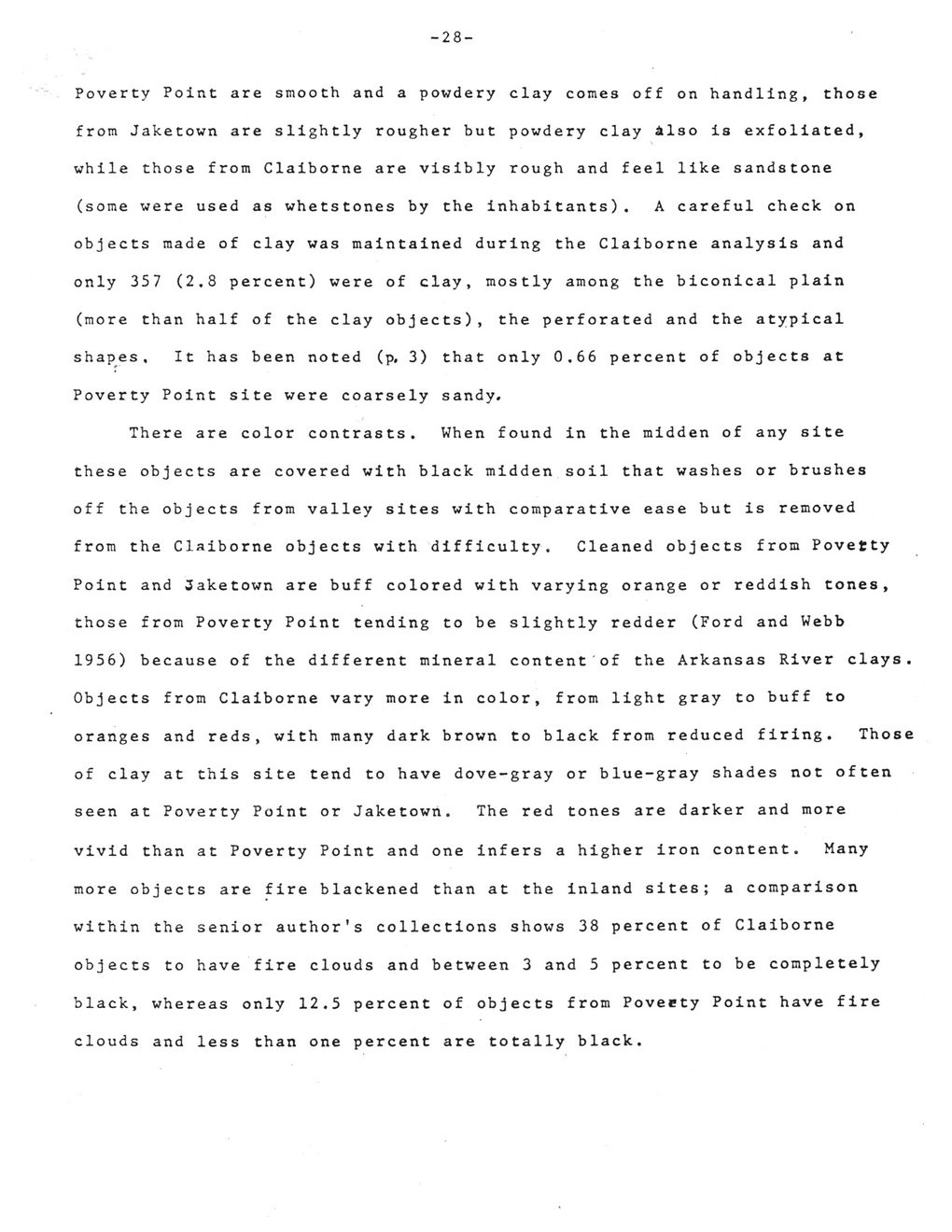This text was obtained via automated optical character recognition.
It has not been edited and may therefore contain several errors.
-28- Poverty Point are smooth and a powdery clay comes off on handling, those from Jaketown are slightly rougher but powdery clay also is exfoliated, while those from Claiborne are visibly rough and feel like sandstone (some were used as whetstones by the inhabitants). A careful check on objects made of clay was maintained during the Claiborne analysis and only 357 (2.8 percent) were of clay, mostly among the biconical plain (more than half of the clay objects), the perforated and the atypical shapes. It has been noted (p. 3) that only 0.66 percent of objects at Poverty Point site were coarsely sandy. There are color contrasts. When found in the midden of any site these objects are covered with black midden soil that washes or brushes off the objects from valley sites with comparative ease but is removed from the Claiborne objects with difficulty. Cleaned objects from Povetty Point and Jaketown are buff colored with varying orange or reddish tones, those from Poverty Point tending to be slightly redder (Ford and Webb 1956) because of the different mineral content of the Arkansas River clays. Objects from Claiborne vary more in color, from light gray to buff to oranges and reds, with many dark brown to black from reduced firing. Those of clay at this site tend to have dove-gray or blue-gray shades not often seen at Poverty Point or Jaketown. The red tones are darker and more vivid than at Poverty Point and one infers a higher iron content. Many more objects are fire blackened than at the inland sites; a comparison within the senior author's collections shows 38 percent of Claiborne objects to have fire clouds and between 3 and 5 percent to be completely black, whereas only 12.5 percent of objects from Poverty Point have fire clouds and less than one percent are totally black.

Walden 035